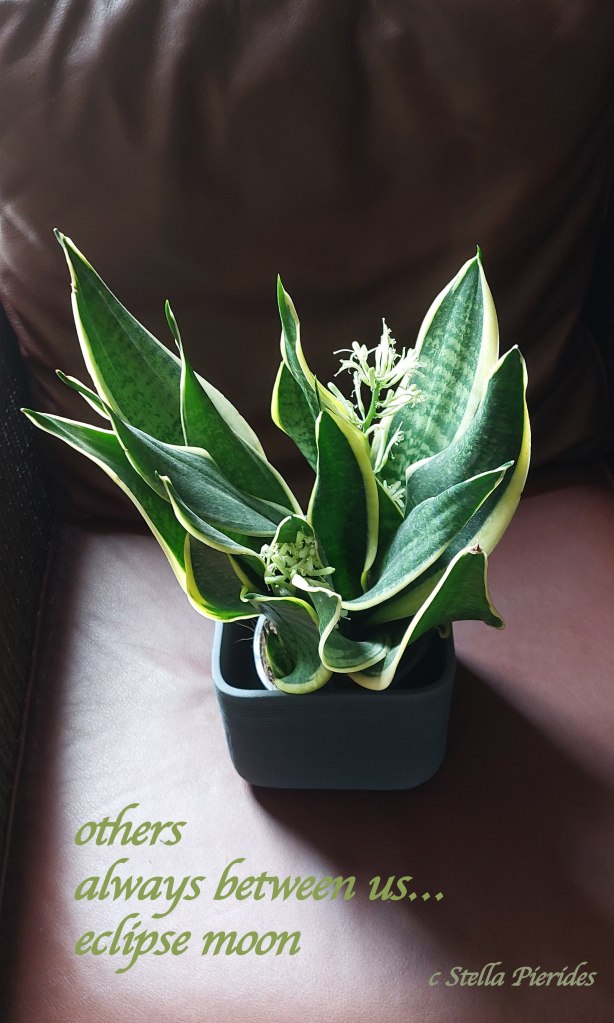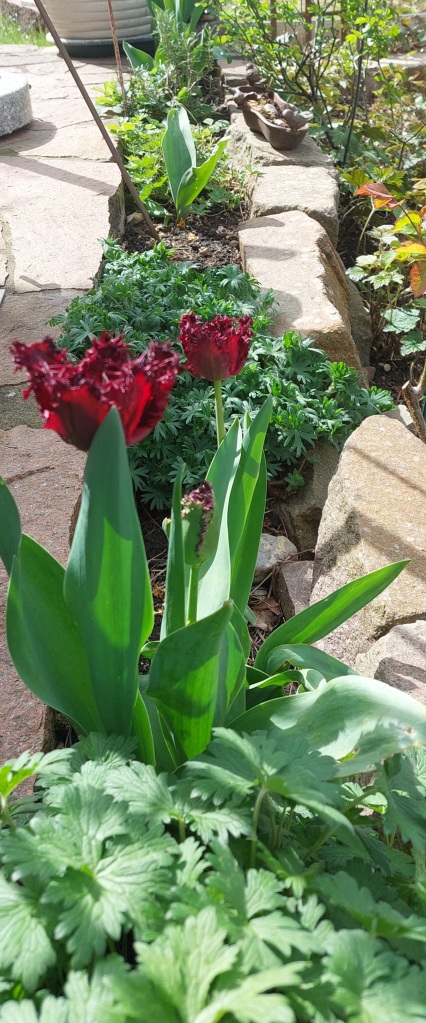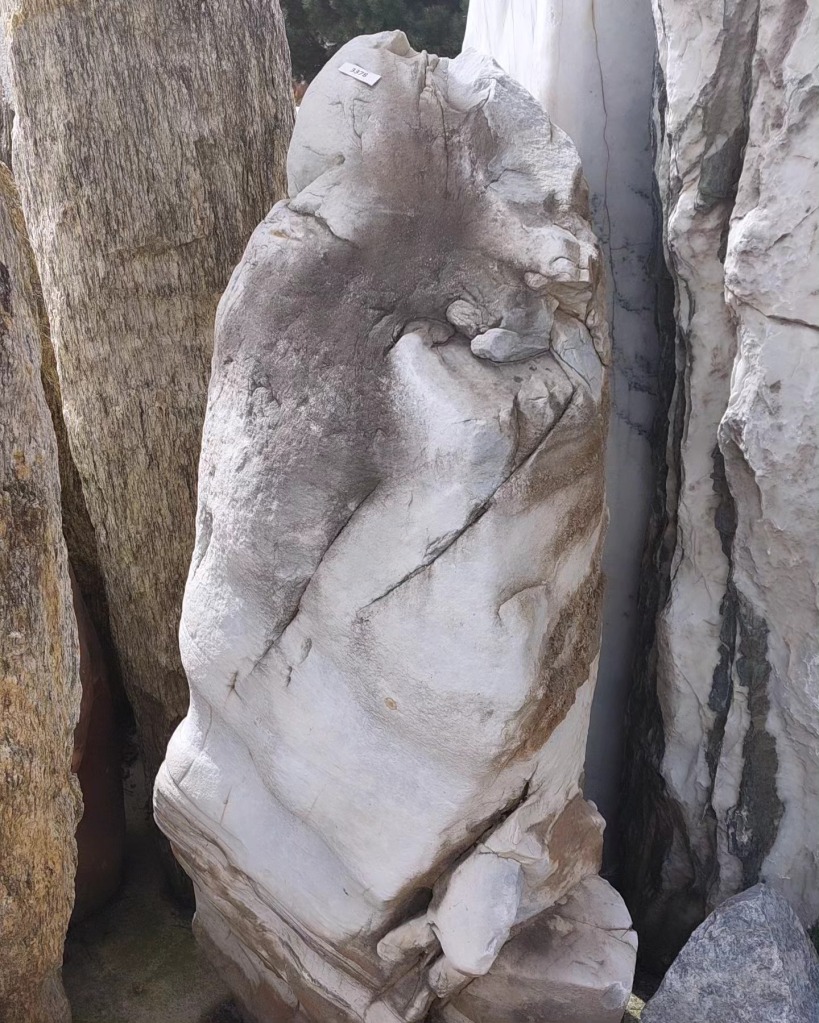
healing…
the frenzied dance
of the Maenads

healing…
the frenzied dance
of the Maenads
herb garden
the bench by the rosemary
occupied

On the fascinating question about the role rosemary plays in memory.
others
always between us…
eclipse moon
.

Happy to see the new “Haiku for Parkinson’s” blog post on The Haiku Foundation site: using haiku to reflect on, and gain a sense of control over, the ups and downs of mood in Parkinson’s. Read it here: https://thehaikufoundation.org/haiku-for-parkinsons-mood…/
#haiku4parkinsons#h4p#Parkinsons#ParkinsonsDisease#haikufound#livingwithparkinsons#MovementDisorder#Parkinson’s

April 11 is World Parkinson's Day!
.
sunlight on tulips…
the long wait may soon
be over


stone quarry...
yet another form waiting
to be freed
.

Did you know that April is Parkinson’s Awareness Month?
A month to raise awareness of this disease and share information about it with the public. The aim is to highlight the urgency of finding a cure, but also matters in need of attention while waiting for a cure. To remind ourselves too, about the different experiences, approaches and treatments available to help manage the condition. What will you be doing during the month? Sign a petition? Make a pledge to exercise more?
Whatever you do, choose an activity that engages you, inspires you, makes you smile! Play table tennis! Read a haiku! Keep talking, keep thinking, keep learning!

Welcome to Tulips for Breakfast!
Here you will find all posts from Haiku for Parkinson’s, Haibun, Exercising Mind and Body, Table Tennis for Parkinson’s, Ping Pong for Parkinson’s, Health, Nutrition, and much more…
What is Dyskinesia? What does it feel like? How can haiku help? Reflecting on my attempts at using haiku to work through the ever-shifting challenges of Parkinson’s Disease.
“My Dyskinesia” is now part of the Haiku Foundation feature Haiku for Parkinson’s. Available to read here.

Happy to see my haibun “Sky Ponds-Himmelsweicher” appear in Contemporary Haibun Online 19.2
I found out about the bomb craters in the Augsburg city forest during a walk with my Parkinson’s walking group. Marvelous recovery of a wounded landscape, and people. And apt for our own situation of struggling with progressive disease.

The Siebentischwald, on the edge of Augsburg, acts as the lung of the city. Lush green vegetation crisscrossed by water channels and dotted by silent ponds makes this forest the life force of Augsburg. It turns out it is also the repository of an interesting piece of the city’s history: the forest floor bearing the scars of thousands of bombs that were dropped on it towards the end of World War II.
On my morning walk with my Parkinson’s group, in this peaceful, green oasis, pierced by high-pitched peacock cries from the adjacent Zoo, I come across oval ponds and other depressions filled with vegetation. I am told they are Bombenkrater, the remnants of craters formed by aerial bombing.
The proximity to the munitions manufacturer Messerschmitt meant that bombs often landed in the forest. However, the massive bombing raid in February 1944 literally dug up the forest floor, leaving numerous wounds on the landscape. In recent years, a public charity transformed some of these craters into ponds brimming with life.
cool forest shade. . .
lingering by the sky ponds
heat from the past
Highlighting articles, blog posts, news, poems, films about living with Parkinson’s in honor of Parkinson’s Awareness Month and beyond.
April is Parkinson’s Disease Awareness Month, set aside each year for drawing attention to this little understood and still under-researched neurodegenerative disease that affects around 10 million people globally (with numbers growing rapidly). At the center of this observance is World Parkinson’s Day April 11. Patients, families, care workers, support groups use the month, and the day, to heighten awareness of the disease as well as inform of the resources that are needed / available to support those afflicted by it.
April is also National Poetry month in the United States, with April 17 set to celebrate international Haiku Poetry Day. Poets, publishers, teachers of poetry, librarians, poetry lovers come forward to inform about, promote and celebrate poetry the whole month. The Haiku Foundation honors International Haiku Poetry Day (IHPD) with HaikuLife, the yearly Film Festival, and EarthRise Rolling Haiku Collaboration, a poem written by haikuists on the day, from sunrise to sundown around the world.
Since both Poetry and Parkinson’s are of particular relevance to me, I will be posting links to interesting articles, information, and Parkinson’s poetry in this blog.
Here is my favorite poem about Parkinson’s (the first one of four) by Robin Morgan:
A post by Minter Krotzer on her husband Hal Sirowitz’s need to keep the disease secret as long as possible, illustrates a common problem faced by people with Parkinson’s known as staying in the Parkinson’s closet! In her post The hardest Secret, she observes, “It’s interesting to me that people aren’t in the closet about many things anymore but they are about disease.”
And here you will find Michael J. Fox‘s story, one of the most well-known figures in the Parkinson’s world, diagnosed in 1991:
A detailed and brave description of personal experience of the disease and the healing practice of Haiku, titled Haiku and Parkinson’s Disease, by Tim Roberts, can be found in the New Zealand Poetry Society website
I hope that my posts will make a small contribution to addressing the heart-breaking dilemma those afflicted with PD find themselves in: on the one hand, the stigma associated with this disease, which creates and reinforces the need to stay in the closet and so deprive those living with it of the support there is; and, on the other, the paucity of information about the disease, which leads to and feeds misunderstanding and stigmatization.
If you are wondering about the title of this post: A red tulip is the symbol chosen for Parkinson’s Disease.